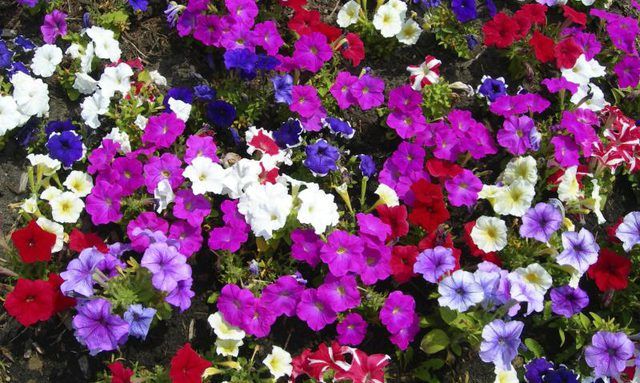Bulbs
Flower Basics
Flower Beds & Specialty Gardens
Flower Garden
Garden Furniture
Garden Gnomes
Garden Seeds
Garden Sheds
Garden Statues
Garden Tools & Supplies
Gardening Basics
Green & Organic
Groundcovers & Vines
Growing Annuals
Growing Basil
Growing Beans
Growing Berries
Growing Blueberries
Growing Cactus
Growing Corn
Growing Cotton
Growing Edibles
Growing Flowers
Growing Garlic
Growing Grapes
Growing Grass
Growing Herbs
Growing Jasmine
Growing Mint
Growing Mushrooms
Orchids
Growing Peanuts
Growing Perennials
Growing Plants
Growing Rosemary
Growing Roses
Growing Strawberries
Growing Sunflowers
Growing Thyme
Growing Tomatoes
Growing Tulips
Growing Vegetables
Herb Basics
Herb Garden
Indoor Growing
Landscaping Basics
Landscaping Patios
Landscaping Plants
Landscaping Shrubs
Landscaping Trees
Landscaping Walks & Pathways
Lawn Basics
Lawn Maintenance
Lawn Mowers
Lawn Ornaments
Lawn Planting
Lawn Tools
Outdoor Growing
Overall Landscape Planning
Pests, Weeds & Problems
Plant Basics
Rock Garden
Rose Garden
Shrubs
Soil
Specialty Gardens
Trees
Vegetable Garden
Yard Maintenance
How to Grow Petunias
How to Grow Petunias. Summer wouldn't be the same without garden beds, planters and window boxes brimming with bright, boisterous petunias (*Petunia spp.*). They can be grown as perennials in U.S. Department of Agriculture plant hardiness zones 10 through 11, though they are often grown as annuals. Petunias produce wave after wave of vibrant,...

Summer wouldn't be the same without garden beds, planters and window boxes brimming with bright, boisterous petunias (Petunia spp.). They can be grown as perennials in U.S. Department of Agriculture plant hardiness zones 10 through 11, though they are often grown as annuals. Petunias produce wave after wave of vibrant, single or double trumpet flowers. After dusk, many of them saturate the air with the scent of cloves. With the right growing conditions, they'll bloom nearly non-stop from late spring to the first fall frost.
Sun and Soil
Petunias need at least five to six hours of daily sun, but the more sun they have, the more flowers they produce. A combination of morning and afternoon sun is fine.
Well-drained soil is another petunia must-have. Without it, root rot is a real possibility. Rich soil isn't as critical, but improving the drainage with a pre-planting amendment of organic compost also boosts nutrients.
Spread a 2- to 3-inch layer of organic compost evenly over the planting bed and work it into the top 8 to 10 inches of soil with a rototiller or cultivating fork. That's between 60 and 90 pounds of compost per 10 square feet of planting bed.
Spacing Petunias
Space petunias depending on their variety. In full sun, allow 1 foot between multiflora or grandiflora hybrids (Petunia x hybrida) and 4 to 6 inches between small-flowered millifora hybrids. Spreading petunias, such as the Wave or Supertunia Series cultivars, should be at least 18 inches apart.
Petunias getting less than five hours of daily sun have fewer flowers; space them more closely for an impressive display.
Fertilizing Frequency
After planting petunias, spread granulated, balanced 10-10-10 fertilizer over the soil to encourage healthy leaf, flower and root development. Use 3 1/3 tablespoons, or the manufacturer's suggested amount, of granules per 10 square feet of soil, and water it in.
Beginning in midsummer, dose the petunias every three weeks with a solution of 10-10-10 liquid fertilizer. One manufacturer recommends diluting 6 tablespoons of fertilizer concentrate in 1 gallon of water to soak each 10 square feet of the planting bed.
Fertilizers are available in different strengths, so follow the label's instructions on how much to use and how often to apply it.
When to Water
Petunias tolerate heat without flinching, and most of them get by with once-a-week watering. When the soil's surface feels dry to the touch, water them from beneath so the moisture reaches the soil instead of remaining on the leaves and flowers.
Water slowly and deeply, stopping if necessary to let the soil absorb the water. The goal is to wet the soil to a 6- to 8-inch depth.
Spreading petunia cultivars are exceptions to the once-a-week rule. Check them daily by inserting a finger 2 1/2 to 3 inches deep into the soil. If it feels dry, water.
Grooming for Blooms
While many newer petunia varieties are self-cleaning, older ones still benefit from having each flower pinched off as it fades. Be sure to get the entire flower, including the green base where the petals emerge. This is where seeds form, and if they're allowed to mature, the plant stops blooming.
Pluck the flowers off between your thumb and forefinger. If the naturally sticky leaves bother you, wear gloves. New blooms quickly replace the deadheaded ones.
After months of blooming, petunias may run out of steam in late summer. If so, prune each stem back by half, using clean, sharp stem cutters disinfected between cuts in rubbing alcohol.
Make the cuts just above leaf nodes and the plants will respond in a week or two with healthy new growth and flowers.